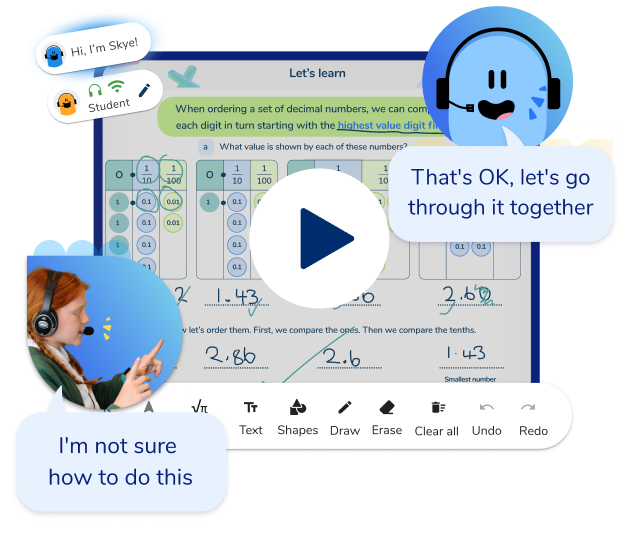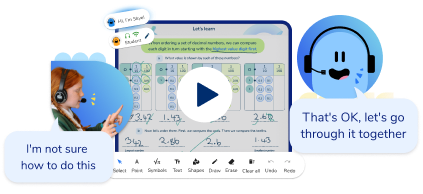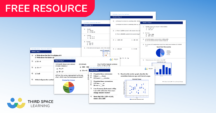Teaching Year 4 Mental Maths And How To Make The Times Tables Stick
By Year 4 mental maths, pupils are gaining confidence in using their number skills and applying known facts and applying more concepts to more complex problems. They are improving their use of written methods but using their mental maths to ensure accuracy and speed.
Mental maths in Year 4
In Year 4 mental maths, pupils will be applying maths to real world problems. Children should be fluent in addition, subtraction, multiplication and division, although they may only be adding to 3 digit numbers and multiplying within the 2, 3, 4, 5, 8 and 10 times tables at the start of the year.
By the end of Year 4 they should be fluent in the 1-12 times tables as they will be taking the Times Tables test in the summer term. There is no statutory mental maths test in Year 4 apart from times tables, which may inadvertently cause a push more towards multiplication in lessons. However a wide range of maths operations should still be practised and applied.
Place value knowledge should now extend into the thousands and involve adding four digit numbers. Year 4 is also where we introduce Roman Numerals and the history of the number system (a somewhat controversial addition to the curriculum in recent years).
What the national curriculum says about Year 4 mental maths
For lower KS2 the national curriculum says “At this stage, pupils should develop their ability to solve a range of problems, including with simple fractions and decimal place value. Teaching should also ensure that pupils draw with increasing accuracy and develop mathematical reasoning so they can analyse shapes and their properties, and confidently describe the relationships between them. It should ensure that they can use measuring instruments with accuracy and make connections between measure and number.
By the end of year 4, pupils should have memorised their multiplication tables up to and including the 12 multiplication tables and show precision and fluency in their work.”
Fluent in Five Years 1-6 (Weeks 1-6)
Download this free pack of daily mental maths questions for Years 1-6
Download Free Now!Recommended mental maths skills to teach in Year 4
Together with the 1-12 x multiplication and division facts and basic addition facts, children should be able to answer the following Year 4 mental maths questions:
- Addition and subtraction of multiples of 10 (e.g. 70 + 30 = 100, 50 + 60 = 110, 20 + 40 = 60)
- Addition and subtraction of multiples of 100 where the answer is 1,000 or less (e.g. 300 + 400 = 700, 400 + 600 = 1,000)
- Double and halves of multiples of 10 to 100 (e.g. double 60 = 120, half 50 = 25)
- Multiplying two-digit numbers by 10 (e.g. 24 x 10 = 240)
- Halves of any even number to 100 (e.g. half of 22 = 11)
- Multiplying any two and three-digit number by 10 and 100 (e.g. 24 x 100 = 2,400)
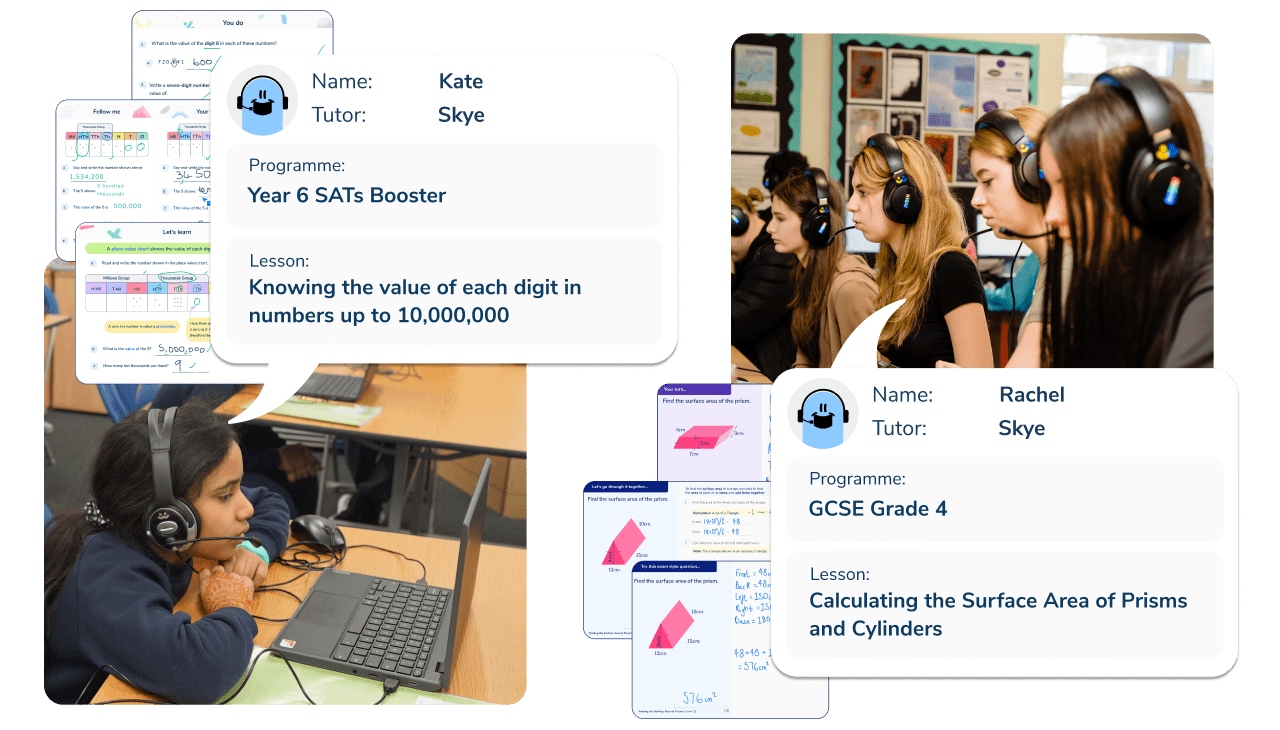
Meet Skye, the voice-based AI tutor making maths success possible for every student.
Built by teachers and maths experts, Skye uses the same pedagogy, curriculum and lesson structure as our traditional tutoring.
But, with more flexibility and a lower cost, schools can scale online maths tutoring to support every student who needs it.
Watch Skye in actionYear 4 mental maths: place value
Place value to 4 digit numbers – thousands, hundreds, tens and ones – will be introduced in Year 4 and applied when doing addition and subtraction. Pupils should get confident with rounding numbers, and ordering them.
Manipulatives, such as Base 10, are useful to introduce concepts and show children how the size and scale of the number changes with larger numbers. A place value grid is a useful way to teach children about where a digit sits in each column.
Partitioning and the use of number lines can help children to visualise numbers in different ways. Trying different approaches can help different children to find the visual concept which makes the most sense to them.
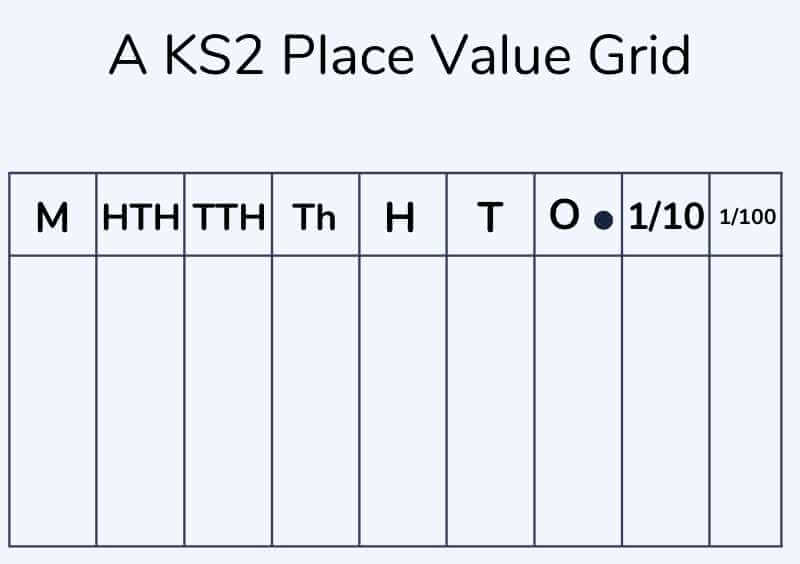
However, visualisations can also cause confusion, if children are not yet confident in their understanding, so it is vital to break down the steps and really plan out how the visualisation will support the questions they are answering.
Lots of whole class, teacher-led modelling followed by using pictorials or manipulatives when going to individual tasks can help. Use of powerpoint, visualisers, and online manipulative websites can all be vital in the toolkit of any Year 4 teacher. Mental maths strategies tend to follow on from robust physical modelling.
Year 4 mental maths: addition and subtraction
In KS2 addition and subtraction, pupils will learn how to use the formal columnar method. Regular practice will help them to transfer this knowledge into their arsenal of known number facts for mental maths. Mental maths is not simply the rote learning of facts but the understanding of the concepts and numbers being dealt with.
It is vital that pupils in Year 4 are also applying these methods to problem solving, including 2-step problems across a range of operations, choosing the appropriate one for each problem. Checking their working methods is also an important skill and pupils will be expected to use inverse operations to check their answers.
Number bonds are still a core foundation for addition and subtraction and lots of maths practice involving those number bonds is key. We can often assume children remember them if they have had lots of repetition in the past but quick recall practice of number bonds, even a quick call and response during the register or at the start or end of a lesson, can ensure these known facts are not forgotten.
Year 4 mental maths: multiplication and division
In Year 4 pupils should be taught to apply known multiplication facts to larger numbers, for example they should know that 800 divided by 4 is 200, based on knowing that 8 divided by 4 is 2. This mental calculation based on solid understanding of multiplication, division and place value will enable them to manipulate bigger numbers over time.
Recall of multiplication tables is really important in KS2 maths. As the times tables test is now administered in Year 4, it is vital that this key skill is embedded.
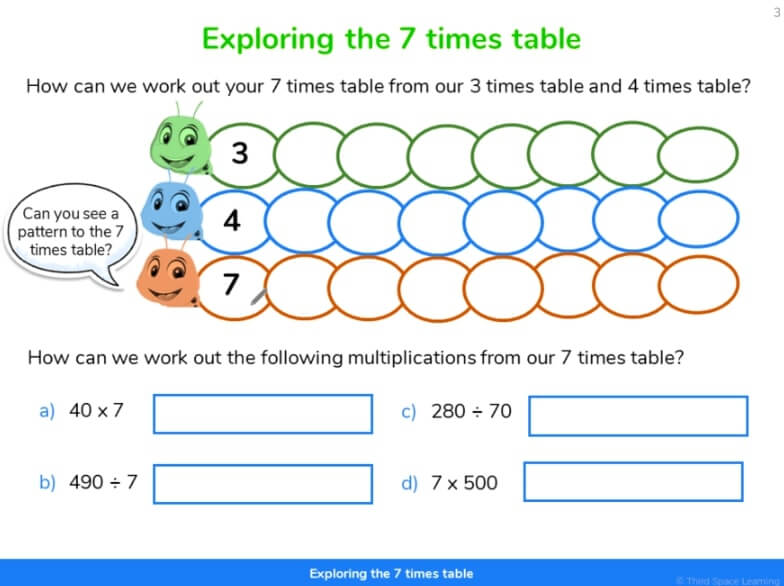
Long multiplication is also a part of Year 4 maths teaching and maths worksheets may be used for this as a way to give pupils plenty of practice with a range of numbers. Children should be confident to apply their mental maths here too, as their known number facts will help them to both solve problems and to check their answers.
Third Space Learning offers one-to-one online tutoring, to ensure that each student is on track to meet their benchmark. Tailored to the needs of the individual, our tutoring sessions aim to build confidence and capabilities in maths.
Year 4 mental maths: fractions, percentages and decimals
In Year 4 children are expected to add fractions with the same denominator and to have an understanding of the concepts surrounding fractions – such as a hundredth being the result of dividing by 100. They will also use fractions to divide quantities – perhaps through real world problems such as making a recipe.
In Year 4 students will also be introduced to decimals and will round decimals to the nearest whole number. When measuring they will also start to note decimals on measuring devices such as on weighing scales.
They will not yet tackle percentages but these building blocks will help them on their way through Key Stage 2.
The importance of mental maths skills in Year 4 problem solving
It is crucial to link maths skills, both mental maths and written methods, into problem solving and reasoning questions, to help students to relate maths to the real world around them.
Year 4 maths questions will include word problems, patterns and number sequences as well as 2-step word problems where pupils must know which operation to apply to solve them.
Year 4 mental maths challenges
By Year 4 pupils are usually starting to gain a certain level of competency in maths which makes them more willing to take on maths challenges. They may enjoy mental arithmetic tests as informal challenges and may also like to tackle “hard” challenges where they must really think about how to solve problems.
Low threshold, high ceiling tasks are a great way of introducing even nervous students to maths challenges which stretch their brains. “All possibilities” problems, for example, are easy to get going with, but allow the more confident to come up with the most efficient methods which can then be shared with their peers.
Maths activities where there is no set answer sheet available forces everyone, teacher included, to apply logic as well as the more traditional maths skills to find a solution. Problems like “Einstein’s Puzzle” can take up a whole lesson but the thinking involved, even if they do not solve it, is invaluable as it allows children to flex their maths muscles!
The Pet Shop Puzzle is a great “All possibilities” challenge for Year 4. Give a choice of 7 pets in a pet shop. Tell children they must buy 3 pets from the pet shop on each visit. They cannot take the same pet twice each time, and can not take the same combination twice. How many visits to the pet shop can they make? So for example they might buy Cat, Dog, Snake on the first visit. Then Mouse, Hamster, Bird on their second visit. And so on. How can they be sure they have taken all possibilities?
Any child can get going on this as they will start listing possible solutions. But they may not think to have a pattern to their answers so will struggle to find all possibilities. Let them do this for a while then suggest to the whole class they think about a pattern i.e. Cat, 2, 3; Cat, 2, 4; Cat, 2, 5… and so on. By the end of the lesson you would hope everyone has figured out all possibilities. And a child or two may have figured out an even quicker way to work it out which is that from 7 pet choices you would have 7 sets of answers. Within each set 1 will be repeat (i.e. you will have Cat Dog Snake in the Cat set and Dog Cat Snake in the Dog set) and 1 will use the initial pet twice so be disallowed (Cat Cat Snake) so you will have 7 sets of 5 solutions. Then we can multiply to find the answer. This whole lesson is not about the answer so much as the methods and how we draw on our mathematical knowledge and reasoning. Let children use paper that they can screw up and throw away for when they want to start again!
Year 4 mental maths resources
We have lots of mental maths resources available in our Third Space Learning Maths Hub, including the ever popular Fluent in Five and Times Tables resources. There is a mix of workbook style worksheets and more interactive mental maths games and ideas for every ability.
The Third Space Learning website also offers a lot of free resources. Checkout some of our most popular mental math resources:
DO YOU HAVE STUDENTS WHO NEED MORE SUPPORT IN MATHS?
Skye – our AI maths tutor built by teachers – gives students personalised one-to-one lessons that address learning gaps and build confidence.
Since 2013 we’ve taught over 2 million hours of maths lessons to more than 170,000 students to help them become fluent, able mathematicians.
Explore our AI maths tutoring or find out about an online maths tutor for your school.
